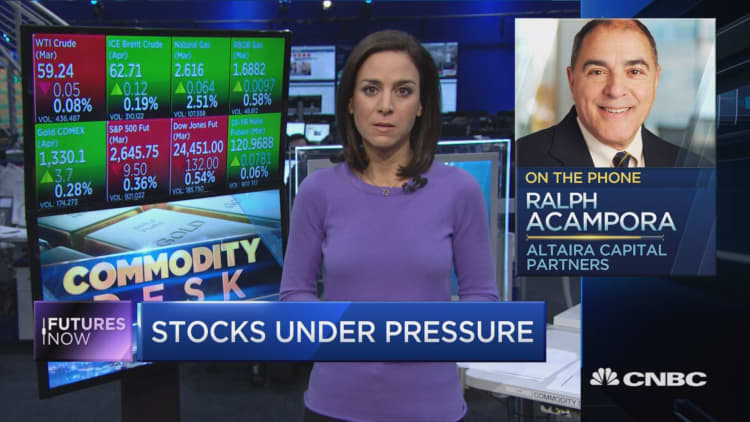
The big, bad bond rout blew away Wall Street's gains last week.
But, history shows this won't be a lasting trend, says long-time technician Ralph Acampora.
"I want everybody to sit back, relax and let's look at this history," Acampora told CNBC's "Futures Now" on Tuesday.
He picked out a chart that he says proves the case.
Bond yields saw a sharp increase in recent weeks, but Acampora says this is simply the next phase in the classic cycle. Bond yields rose from the late '40s into the 1980s, before entering a secular downtrend from the early '80s to today. During that time, the stock market went through both bullish and bearish cycles.
"Stare at the lower left-hand corner of that chart carefully," said Acampora. "Look at the years between 1948 and 1962. Guess what — rates started turning up. Look at the chart up above it, market went up. In other words, you can have rising stock prices with rising interest rates."
The problem for stock markets is when bond yields break above 5 percent, he said. Yields topped that level in mid-1966. From that point until the end of 1980, bond yields spiked to above 10 percent. Over that same time frame, the encountered a series of troughs, including a sharp sell-off in 1974. At that point, riskier assets such as stocks were less competitive against the safer returns of a high-yield Treasury bond.
"Where the secular bull market ended … in the mid-'60s, interest rates went above 5 percent," said Acampora. "That's the death knell."
The 5 percent level on yields is still far off. The yield on the 10-year Treasury bond has not been above 5 percent since mid-2007. From that point, yields quickly fell through to the end of the decade, exacerbated by a series of interest rate cuts from the Federal Reserve. By comparison, yields have held under 3 percent for the past four years. Yields on 10-year Treasurys climbed as high as 2.9 percent on Monday, a level not seen since mid-January 2014.
Even though high yields are not a long-term concern to Acampora, day-to-day activity should create some volatility on stock markets, as we saw last week. Yields spiked earlier this month after stronger wage growth in the monthly jobs report set off concerns over inflation and how fast the Fed might raise rates. That triggered a sell-off in equities in which the Dow plummeted more than 1,000 points in two separate sessions.
"There'll be a lot of volatility," added Acampora. "But, the secular bull market is alive and well. I think you've got years left even with rising rates."
The yield on U.S. 10-year Treasury bonds traded just above 2.8 percent mark on Wednesday, a level it has hovered around since spiking above it at the beginning of the month.



